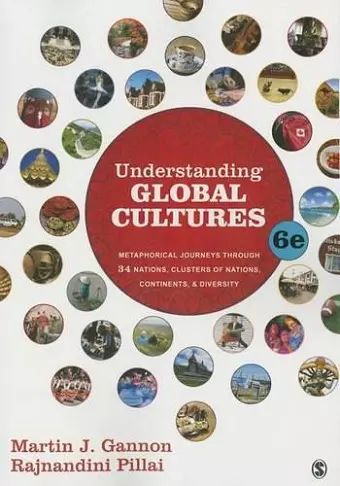Understanding Global Cultures
Metaphorical Journeys Through 34 Nations, Clusters of Nations, Continents, and Diversity
Martin J Gannon author Rajnandini K Pillai author
Format:Paperback
Publisher:SAGE Publications Inc
Published:28th Apr '15
Should be back in stock very soon

In the fully updated Sixth Edition of Understanding Global Cultures: Metaphorical Journeys Through 34 Nations, Clusters of Nations, Continents, and Diversity, authors Martin J. Gannon and Rajnandini Pillai present the cultural metaphor as a method for understanding the cultural mindsets of individual nations, clusters of nations, continents, and diversity in each nation. A cultural metaphor is any activity, phenomenon, or institution that members of a given culture consider important and with which they identify emotionally and/or cognitively, such as the Japanese garden and American football. This cultural metaphoric approach identifies three to eight unique or distinctive features of each cultural metaphor and then discusses 34 national cultures in terms of these features. The book demonstrates how metaphors are guidelines to help outsiders quickly understand what members of a culture consider important.
"Each one of these chapters is very detailed and the metaphor is sensible… This is a great introduction to cultural diversity for many different reasons, such as economy (Italy), religion (Malaysia), language (Belgium, plus Canada and Switzerland among many others). It meets the demand for a business cultural geography companion text." -- Jorge A. Gonzalez
"This text more thoroughly increases cultural awareness to broaden students′ perspectives of what they may encounter as they travel to different parts of the world. The chapters are well written; my students are challenged by, and maintain an interest in, the level of the book. It is a book that provides a challenge for the level of students in my course." -- Nancy Lyons
"This is the only textbook that I have found that actually discusses relevant information about contemporary cultures from all over the world…This is a wonderful text! I actually encourage other instructors to use it for their comparative cultures classes. It is easy to read and understand, discusses relevant information, and helps students become more aware of cultures that they may very well come in contact with. I will be using the next editions of this text, as it is the best I′ve found." -- Heather M. Smith
"Overall I have enjoyed the text and have found it a useful resource for myself. Students who have used it as recommended reading have also found it helpful in developing a more colorful understanding of issues from the module. The structure of the book is good, with an appropriate break up of countries as it demonstrates that despite major visible differences the cultures in each category actually have important base characteristics. I am glad this text is available as it supports the broad themes of my course admirably well." -- Patrick Meehan
"It is one of the most interesting textbooks in the marketplace. The authors KNOW what they are doing. I love this textbook and have been using it for years now. It is one of the only textbooks that many of my students do NOT sell back to the campus bookstore!" -- Patrice Hughes
"I enjoy using this book in my classes and students also seem to like it. I get positive comments on the text in student evaluations." -- Alexandre Ardichvili
"The book is a very useful resource for any one traveling to a foreign country because it provides unique in-depth insights to cultures. Thus, I encourage students to hang onto the book as a resource in dealing with customers from these countries. What I like about the current format is that the questions and the associated answers are infinite once you dig deeper into the metaphor and then start comparing/contrasting metaphors." -- Brad Koch
"This is a fantastic book and I will continue to use it in whatever format." -- Jennifer Basquiat
ISBN: 9781483340074
Dimensions: unknown
Weight: 1250g
680 pages
6th Revised edition